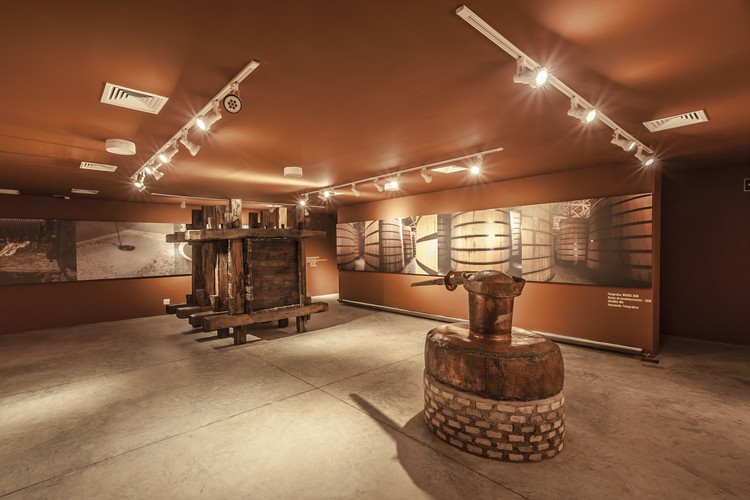
-
Architects: Jô Vasconcellos
- Year: 2012
-
Photographs:Junia Mortimer
-
Manufacturers: Usiminas

Text description provided by the architects. The city of Salinas, located in the countryside of Minas Gerais, is one of the major manufacturers of artisanal cachaça in Brazil. The worldwide renowned cachaça Havana, among others, is made in this city. Salinas, in the North Region of the State, is one of the major exporters of this beverage. In Salinas the weather is hot throughout the year. These are the reasons why the State Government of Minas Gerais has chosen Salinas as the home of the Cachaça Museum.

We tried to make a project that reflects the desires of the population to house the Cachaça Museum. Therefore, the implementation and spatial organization must significantly contribute to the transformation of the surrounding urban areas, redeeming the so wanted socialization and creating new and unexpected perceptions of the area according to the new public space.

The building is a continuity of volumes that create a large and inviting square that is open to the local community and redeems the public aspect and the social commitment that a museum must carry when welcoming the citizens. Furthermore, it must be a building that demands low economical investment and maintenance. Its unusual and surprising vision intends to be an experience of awe, highlighting the image of the museum in the large scale landscape.



The executed and discussed schedule of needs was fully achieved through a common plan created among the professionals working on the project. A linear route that is full of surprises was defined. This route will feature various atmospheres that will be created through the use of spatial, technical and museographic techniques intended to enable a dynamic process of interaction between the visitors and the objects. Straight lines, flat surfaces and solid blocks have been used as significant and defining elements of the new landscape.

The space is recreated and the perception is changed by the search for transitional spaces, different scales, open areas, gaps and volumes. The rooms meet the museological demands and vary in length, width and height. The volumetry reflects exactly these needs and establishes the connections between them. The volumes are build using thick masonry with uneven finishing following the traditional architecture of the region.

The simple construction holds spatial complexity. Its volumes react to light and heat. In order to minimize the heat diffusion, the walls are thick and the double slabs create an air cushion where the cutting-edge technical equipment used in the museum can be installed.


The multifunctional zone is articulated through a continuous and shaded circulation area that works as a transitional point between the exterior and the interior of the building. This zone is rather necessary in areas of warm weather. With different proportions, the project creates an expressive light and shadow effect through the use of concrete carved elements that enables a semi- transparency and abundant ventilation. This weft gives certain continuity to the exhibition solid areas as if these solid constructions were fragmented towards the external area - a pergola shaded square. In these spaces the difference between the exterior and the interior remains a little diffuse.


Beyond the partially open spaces, there are living areas, a square, patios, terraces, an amphitheater with pergolas, that alternate with open areas and lumberyards that can provide more privacy and shaded areas according to activities to be developed, such as classes, workshops, etc. These are multifunctional areas, where the wind flows, without rigid architectural delimitation between the building and the ground.

The intention is to make the area an oasis of light, shadow, comfort and a meeting point for knowledge and enjoyment. The ecological vocation of the building can be seen through its building characteristics. The strict selection of materials is suitable for the exhibition spaces and its identity with the local background. The building appropriates the gigantism of the scale through the total occupation of the longilinear area. The landscape project will complement the idea through the use of local large-size species of plants that will provide the so desirable shaded areas.





















































